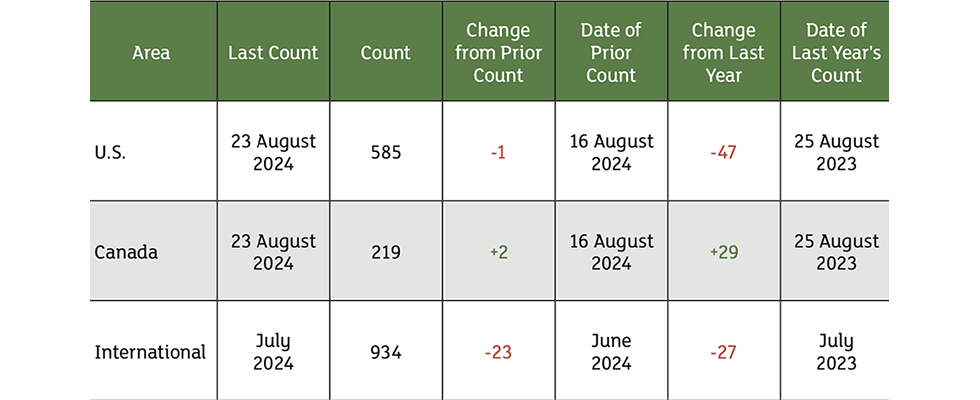
The Consumer Price Index for All Urban Consumers (CPI-U) increased by 0.2% in July, following a 0.1% decline in June, with a 2.9% rise over the past 12 months. The shelter index, which rose 0.4%, contributed to nearly 90% of the monthly increase, while the energy index remained unchanged after previous declines. The food index also increased by 0.2%. Excluding food and energy, the CPI rose by 0.2%—driven by gains in shelter, motor vehicle insurance and other categories—while decreases were seen in used cars, medical care and airline fares. This marks the smallest 12-month increase in the overall CPI since March 2021, with core inflation also showing the slowest growth since April 2021.
In July, the unemployment rate increased to 4.3%, while nonfarm payroll employment rose modestly by 114,000 jobs, according to the United States Bureau of Labor Statistics. Employment gains were noted in sectors such as health care, construction and transportation and warehousing, while the information sector saw job losses.
In July, the Producer Price Index (PPI) for final demand increased by 0.1% on a seasonally adjusted basis, following a 0.2% rise in June and no change in May. Over the 12 months ending in July, the index for final demand advanced by 2.2%. The slight rise in the PPI was driven primarily by a 0.6% increase in prices for final demand goods, while the index for final demand services decreased by 0.2%. Prices for final demand excluding foods, energy and trade services increased by 0.3% in July and by 3.3% over the past year.
The increase in final demand goods prices was largely due to a 1.9% rise in the final demand energy index, with gasoline prices alone contributing to a quarter of the overall gain. Other increases were noted in diesel fuel, meats and fresh fruits, while prices for electric power and steel mill products declined. In contrast, the decrease in final demand services was primarily attributed to a 1.3% drop in trade services margins, particularly in machinery and vehicle wholesaling, and retailing of food, alcohol and automotive fuels. However, some service categories—such as portfolio management and truck transportation of freight—saw price increases.
In July, U.S. import prices increased by 0.1%, following no change in June, driven by rises in both fuel and nonfuel import prices. Over the past year, import prices grew by 1.6%, marking the largest annual increase since the end of 2022. Fuel import prices rose by 0.5% in July, reversing a 1.7% decline in June, with petroleum and natural gas prices both contributing to the increase. Notably, natural gas prices saw their first monthly rise since November 2023, despite a 40.6% decline over the past 12 months. Nonfuel import prices also edged up by 0.1%, supported by higher prices for foods, automotive vehicles and capital goods, while prices for consumer goods and nonfuel industrial supplies and materials declined.
Export prices rose by 0.7% in July, rebounding from a 0.3% decrease in June. The price index for import foods, feeds and beverages saw an increase of 1.4%, mainly due to a sharp rise in vegetable prices. However, prices for nonfuel industrial supplies and materials dipped slightly by 0.1%, led by a decline in chemical prices. Finished goods import prices were mixed, with automotive vehicles seeing a 0.4% increase due to higher passenger car prices, while consumer goods prices fell by 0.1%, driven by a drop in household goods prices.
Reference
bls.gov/news.release/cpi.nr0.htm
bls.gov/news.release/empsit.nr0.htm
bls.gov/news.release/ppi.nr0.htm
bls.gov/news.release/ximpim.nr0.htm
bls.gov/news.release/jolts.nr0.htm

